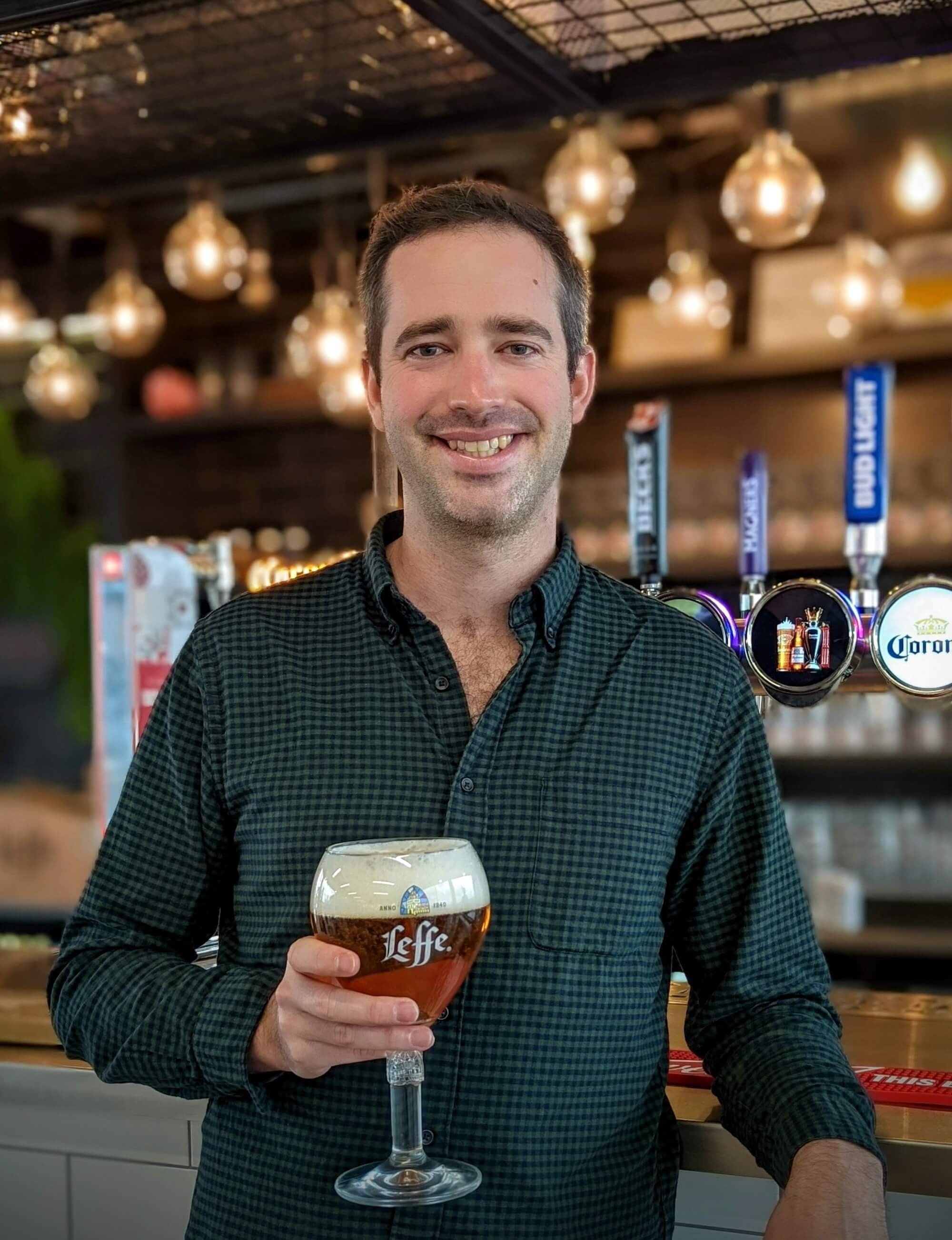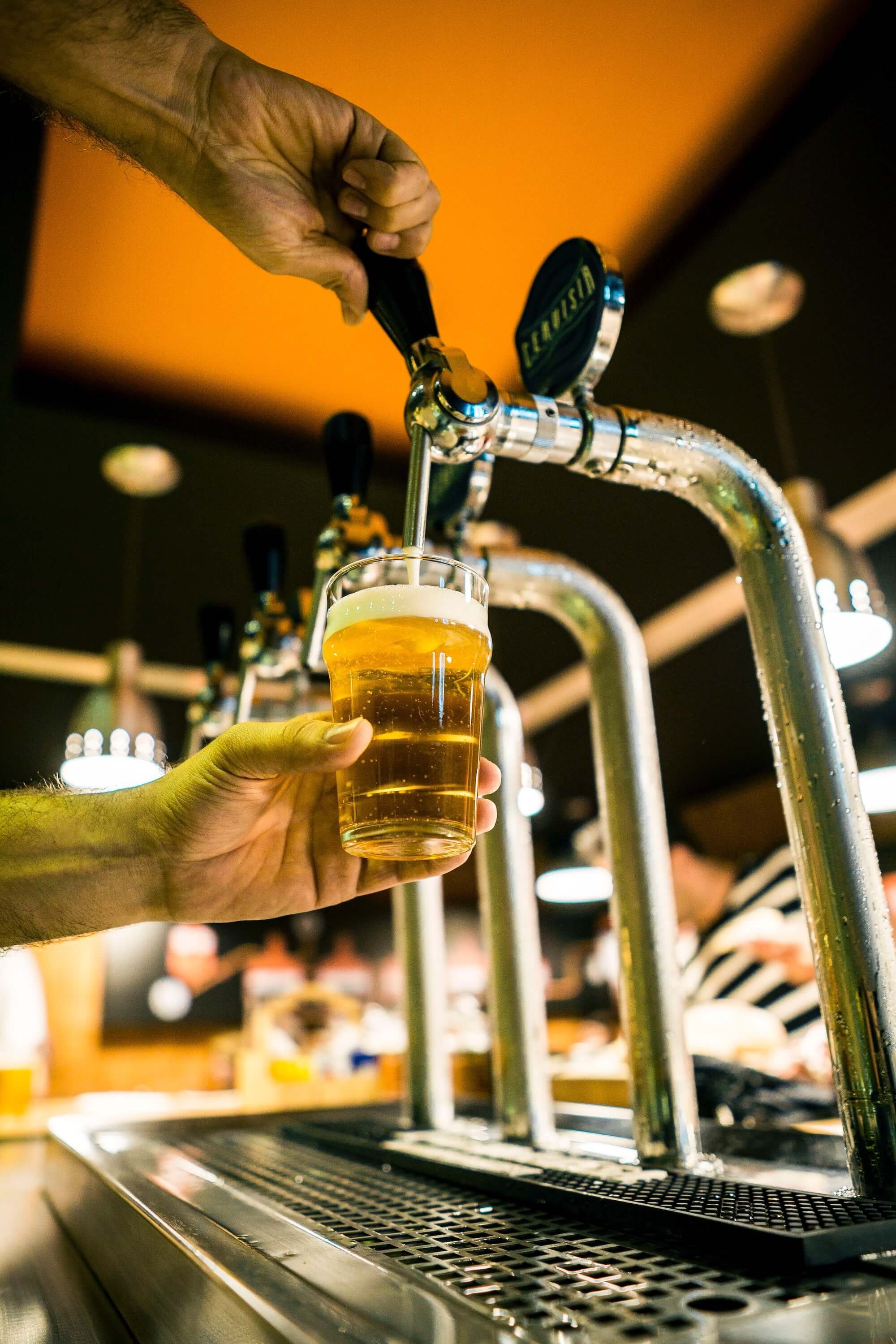Master Cicerone Shane McNamara Shares Beer Journeys & How to Pass the Exam
The Master Cicerone exam is one of the hardest exams in the world. Since its inception over a decade ago, only 20 people have ever passed this 2- day beer exam. The 20th person to pass is London-based Australian Shane McNamara who works for AB-Inbev in global quality. McNamara is the first Australian to pass the exam.
I sat down with McNamara who discussed the exam in detail and shared his thoughts for the future of beer.
Why did you decide to go down the path of becoming a Master Cicerone and why do you think the qualification is important?
I believe beer and brewing education are both incredibly important. Having a solid foundational knowledge and understanding allows you to appreciate and sometimes challenge the status quo of why we approach beer and brewing the way we do.
On a personal level, I’m the type of individual that enjoys constantly learning and developing new skills and I saw the journey to Master Cicerone as the peak achievement in the beer world and the perfect way to solidify my knowledge along the way. Having a program like Cicerone and qualifications like the Master Cicerone acts not only as a vector for those wanting to learn more about beer but find people on your journey through the levels that are also just as interested in beer as you – thus building both education and a community.
What is the exam like?
Difficult. Mentally draining. Exhausting. It’s two days of writing, tasting, problem-solving, and explaining all facets of the beer. With the pass mark set at 85%, not only do you have to be accurate most of the time, but you also need to cover depth as well. Have a poor taste panel, struggle with a difficult question, and you need to compensate for that somewhere else in the exam. There are sixteen essays, twelve oral interviews and eight tasting panels covering beer styles, brewing, ingredients, food pairing, flavor evaluation, and draft dispense. The combination of writing, oral and practical components test all your knowledge, skills and attributes when it comes to beer.
What are your study tips for people thinking of taking it?
Enriching your understanding with both reading and activities will help anchor your memories and recall. I took my time to visit hop farms, malt houses and breweries all over the world. Seeing, smelling and experiencing these components gave me a deeper understanding of beer styles, raw materials, processes and their subsequent impact on the beer. Traveling to countries rich in beer culture such as the UK, Belgium and Germany will aid your understanding of beer styles and nuances.
Lambic brewing is an incredibly unusual process and until I visited Cantillon Belle Vue and Tilquin it was hard to conceptualize many of the different steps without seeing them first-hand.
Pulling a pint using a beer engine from a cask in London along with having to tap, vent, and change casks is near impossible to replicate by simply reading a book to understand. Your storytelling also becomes more personal and experienced – it goes from: “you wait 24 hours for the cask to vent” to “when I was venting a cask of Bass we had to wait an additional 12 hours to the standard 24 because it was so lively.”
Traveling across Germany you’ll experience some of the most distinct beer styles from Berliner Weisse in Berlin, Helles in Munich, Weissbier in Freising, Rauchbier in Bamberg, Kölsch in Cologne, and Altbier in Düsseldorf – yes you can buy these beers in a bottle shop and read their style guidelines along with their BJCP parameters, however, it’s far easier to remember five commercial Kölsch styles when you’ve been to five different breweries within eyeshot of the Cologne Cathedral enjoying it with your friends.
I like to think of this journey as the same of what people describe as becoming a “foodie.” Exploring all kinds of cuisines from Korean BBQ to Peruvian ceviche, Spanish paella, Ethiopian injera and tibs, Polish bigos and Vietnamese bánh xèo will help broaden your horizon on dishes and flavor combinations to pair beers with. Understanding how cooking will impact the flavor – steam vs blanched vs roasted vegetables – ensures you’re grasping all aspects of how the food will interplay with the beer.
One of the most difficult components to study for can in fact be tasting and identifying off-flavors and beer styles in the manner of a few sips of beer. My advice here is to find a group of friends on a similar journey in Cicerone – there’s bound to be a few local to you. While the exam is tasted blind, I would encourage you to study it knowing what you’re tasting before practicing it blind yourself. It’s far better to embed the flavor to memory
rather than trying to simply guess from the beginning. Judging homebrew (BJCP) beer competitions helped enshrine different styles and what something should and should not taste like – again there will likely be a homebrew club very close to you!
If the aforementioned seems daunting and all-encompassing – let it not be. Building knowledge, appreciation and understanding takes time; it’s a marathon, not a sprint. All of the experiences and knowledge I’ve discussed took me years to accumulate and appreciate as I went through the different levels. In 2017 I first sat the Certified Beer Server exam and in 2021 I passed the Master.
Those were some helpful insights – do you have any practical advice for sitting the exam itself?
If it could leave three pieces of advice it would be: time manage your essays, never second guess yourself on taste panels, and always remember to be detailed and expressive when doing your beer descriptions and food pairings.
Everyone is always looking into the crystal ball to see what’s next for beer. What trends do you see on the horizon?
The beer landscape is an ever evolving one – and this is what keeps it such an exciting and interesting space. Brewers are stretching the category at both ends of the spectrum. The resurrection of historical styles and reinvigoration of traditional beers at one end while flavor infused, juice driven beers mark the other end of the spectrum. Breweries are now diversifying into adjacent categories such as seltzer letting their creativity shine – barrel aged seltzers are now a thing!
One personal trend I’m enjoying is the rise in the non-alcoholic beer category. Once an area where diversity in flavor was limited and quality lower, now expresses itself through a wide variety of beer styles with exceptional quality.
I have no doubt you’ve enjoyed many beers on your journey to becoming a Master Cicerone, what are some of your favorite beers to drink?
Fresh beer without a doubt! Some of the best beer to drink and drinking experiences are going to those places where fresh beer is king. And I’m not talking just about having fresh beer at the brewery or taproom – but where the entire community embraces it.
Drinking fresh Kolsch from a stange along the Rhine river in Germany constantly replenished by the server from their Kranz. Ordering your next Chopp from a local bar in Brazil – admiring that tight creamy foam crowning the beer. Sitting on a tiny plastic chair and enjoying Bia Hoi with some newly made local friends in Vietnam. These are the places that embrace fresh beer – hallmarks being smaller servings with constant replenishment and in the case of Chopp and Bia Hoi a shelf life of less than 10 days once in the keg!




